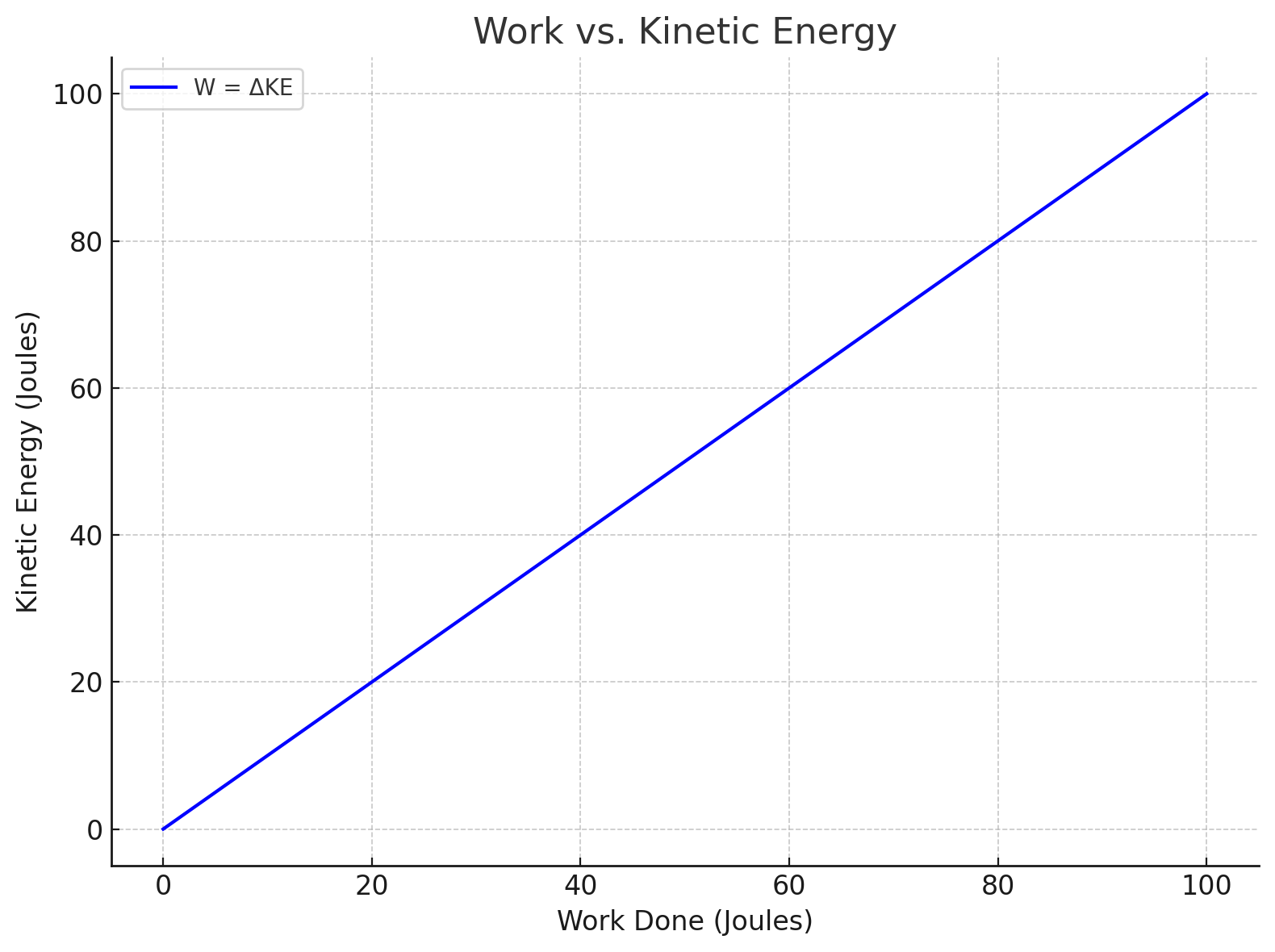Work-Energy Theorem
The Work-Energy Theorem connects the concepts of work and kinetic energy. It states that the net work done by all forces acting on an object equals the change in its kinetic energy.
Statement and Formula
\[
W_{\text{net}} = \Delta K = K_f - K_i = \frac{1}{2} m v_f^2 - \frac{1}{2} m v_i^2
\]
Where:
- Wnet is the net work done on the object (in joules)
- Ki and Kf are the initial and final kinetic energies
- m is the mass of the object (in kilograms)
- vi and vf are the initial and final velocities (in meters per second)
Conceptual Understanding
- If net work done on an object is positive, its kinetic energy increases and it speeds up.
- If net work is negative, kinetic energy decreases and the object slows down.
- If no net work is done, kinetic energy remains constant (constant speed).
- This theorem links forces acting over distances to changes in motion energy.
Derivation using Calculus
Starting with the definition of work:
\[
W = \int \vec{F} \cdot d\vec{x}
\]
\[
= \int m \frac{d\vec{v}}{dt} \cdot d\vec{x}
\]
\[
= \int m \vec{v} \cdot d\vec{v} = \frac{1}{2} m v^2 \Big|_{v_i}^{v_f}
\]
Therefore:
\[
W_{\text{net}} = \Delta K
\]
Example Problem
A 3 kg object moving at 2 m/s is pushed by a net force, increasing its velocity to 5 m/s. Calculate the net work done.
Solution:
\[
W_{\text{net}} = \frac{1}{2} \times 3 \times 5^2 - \frac{1}{2} \times 3 \times 2^2 = \frac{1}{2} \times 3 \times (25 - 4) = 33.75 \, \text{J}
\]
Graphical Interpretation

Quick Practice
Question: A 5 kg object’s velocity changes from 4 m/s to 6 m/s. What is the net work done?
- a) 50 J
- b) 55 J
- c) 65 J
- d) 75 J
Answer:
\[
W_{\text{net}} = \frac{1}{2} \times 5 \times (6^2 - 4^2) = \frac{1}{2} \times 5 \times (36 - 16) = 50 \, \text{J}
\]
Correct answer: a)
Interactive Simulation
Adjust the sliders to change mass, initial velocity, and final velocity. Observe the changes in kinetic energies and net work done represented by the vertical bars.